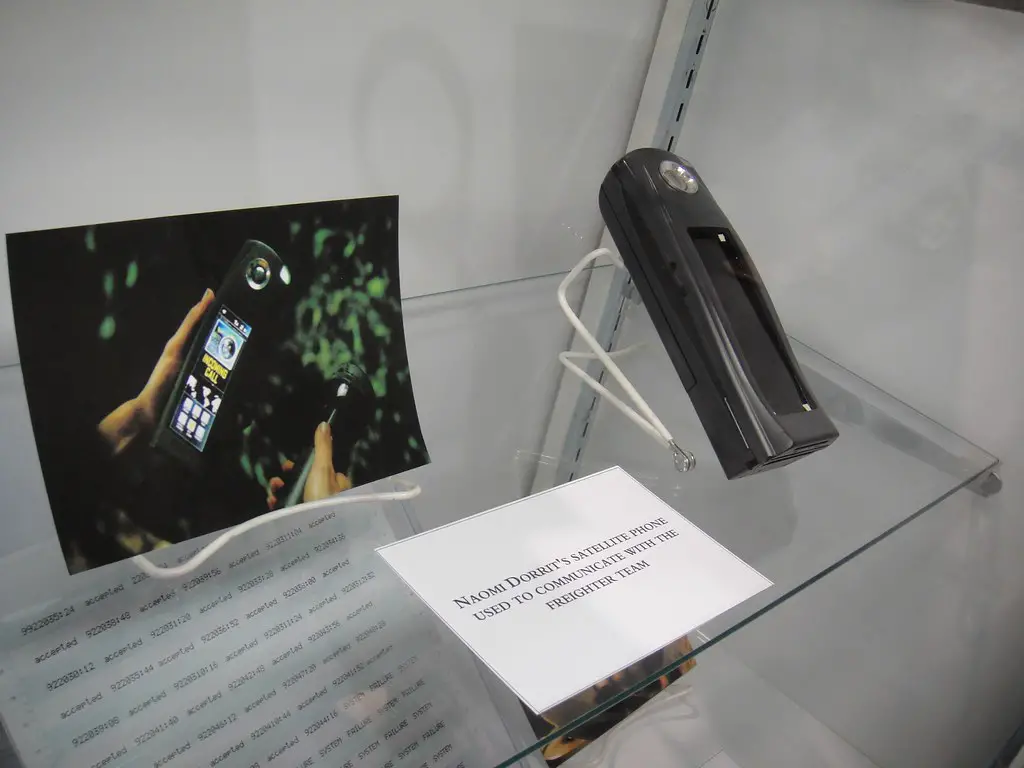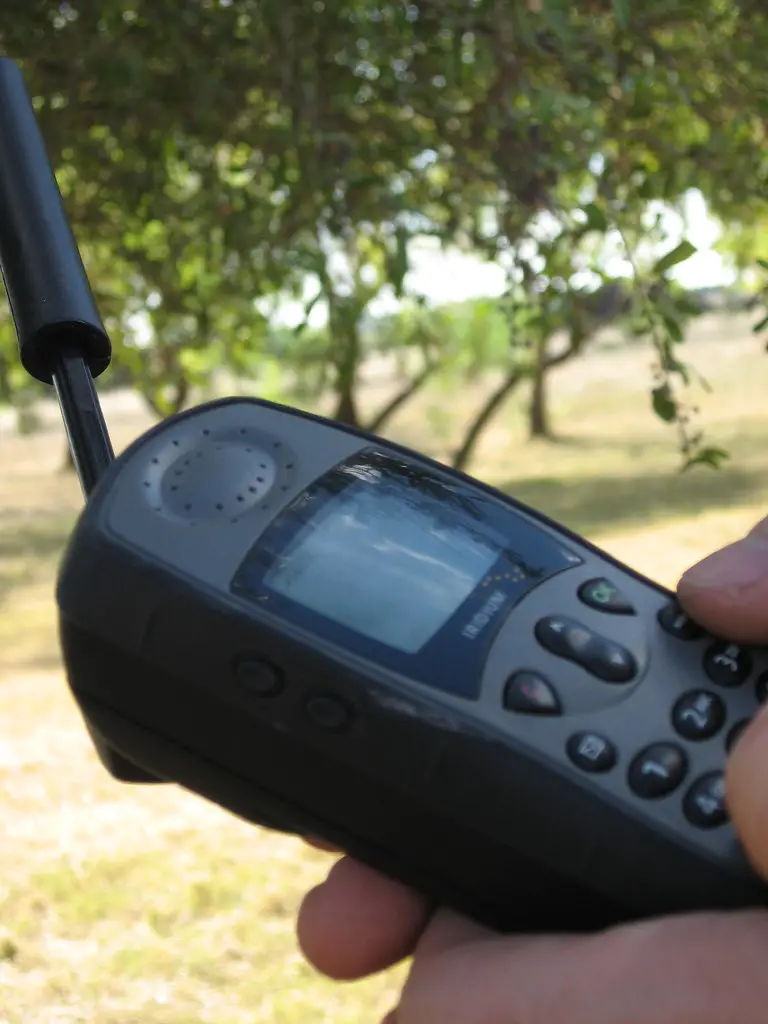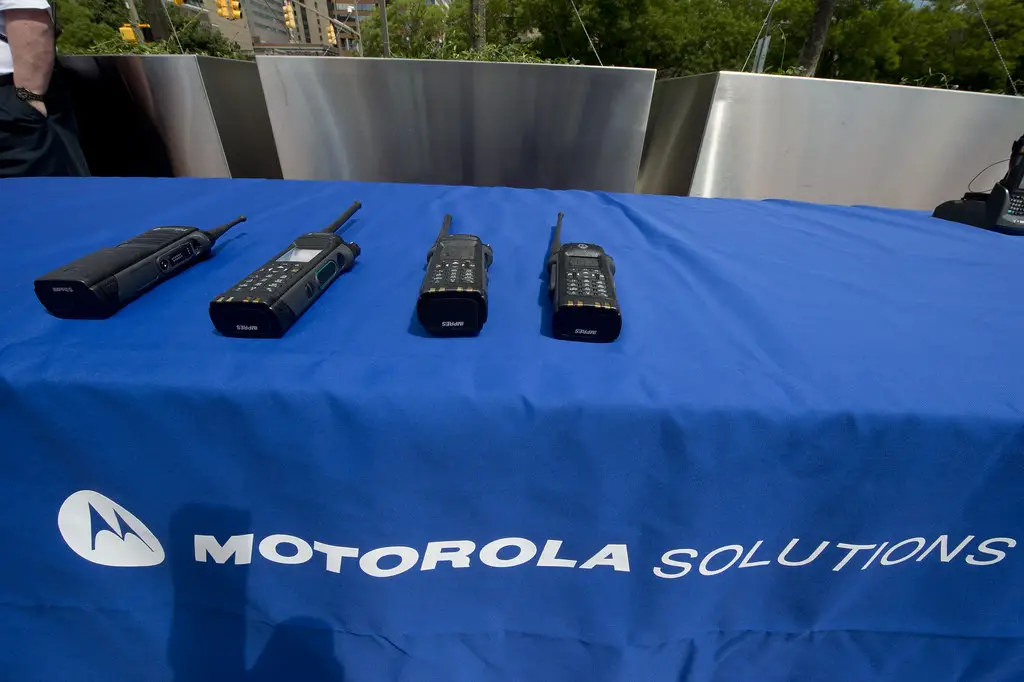In a time of chaos and confusion, one may ask: could satellite phones be the holy grail of communication? Networks may be cut off, but these phones offer a glimmer of hope!
They connect to satellites instead of cellular towers or landlines. This gives them global coverage, making them perfect for remote areas or if the networks are down.
Plus, disasters like earthquakes won’t affect them. So, in moments of crisis, they stay operational.
To make the most of these phones, it’s important to plan ahead. Have a power supply ready, like solar panels or generators. Spare batteries and power banks are helpful too.
Also, create a network of contacts early on. That way, individuals can rely on each other in an emergency. Know how to use the device, too – practice drills!
Satellite phones offer hope. But, they must be prepared for and used properly. With the right measures, these devices can help us communicate in even the toughest times.
Explanation of satellite phones
Envision a world of chaos where communication systems have crumbled. Satellite phones are then seen as the saviors. They use an orbiting satellite network to send and receive signals. This means they can work anywhere on Earth, even in remote places with no cell network.
The big benefit is that they bypass terrestrial issues and give communication when it’s most needed. They also have great features like GPS to locate people during disasters.
To keep satellite phones working during an apocalypse, having power sources is key. Think about portable solar chargers or power banks. Spare batteries are also very useful.
Before the disaster, it’s important to learn how to use the phone. Knowing how to navigate menus, send messages, and make connections is very helpful.
In conclusion, satellite phones are a life saver when communication fails. They rely on orbiting satellites, so they don’t need ground infrastructure. To make sure they work, you should make sure you have enough power and know how to use them. With these things in place, they can bridge the gap between people in need and help.
Pros of using satellite phones in an apocalypse
Satellite phones in an apocalypse have several advantages that can prove to be invaluable in a crisis situation. These devices offer reliable communication capabilities even in remote areas where traditional forms of communication may be unavailable.
They can be used to call for emergency assistance, coordinate logistics, and gather important information in real-time. In addition, satellite phones are not dependent on terrestrial infrastructure, making them more resilient to natural disasters or infrastructure failures.
Moreover, their long battery life and durability make them suitable for extended periods of use in challenging conditions.
A Table depicting the advantages of using satellite phones in an apocalypse:
| Pros of using satellite phones in an apocalypse |
|---|
| Reliable communication capabilities |
| Works in remote areas |
| Emergency assistance |
| Real-time information gathering |
| Resilient to infrastructure failures |
| Long battery life |
| Suitable for challenging conditions |
Satellite phones also offer unique features that have not been covered yet. For example, they have built-in GPS capabilities, which can be crucial for navigation, especially in unfamiliar or hazardous terrain.
Additionally, some satellite phones are equipped with enhanced security measures, ensuring encrypted communication that protects sensitive information. These devices can be essential tools for emergency responders, government agencies, and individuals seeking to maintain communication in a post-apocalyptic scenario.
A true fact: The Thuraya XT-PRO satellite phone is known for its rugged design and high-performance features.
Note: The above information is provided for illustrative purposes and does not constitute an endorsement of any particular satellite phone brand or model.
Satellite phones: the ultimate survival tool for when the world goes to sh*t and you still want to update your Facebook status.
Ability to communicate in remote and disaster-stricken areas
Satellite phones are vital in remote and disaster-stricken areas. They use communication satellites to transmit signals, even when cell towers are damaged or non-existent. Global coverage is available, so you can stay connected, no matter where you are.
Plus, their signal strength and call quality are strong, so you don’t have to worry about congestion or disconnection. And they can reach anyone around the world, unlike walkie-talkies or two-way radios.
This was demonstrated during Hurricane Katrina in 2005, when traditional communication channels failed. But those with satellite phones were still able to contact emergency services and their families. This proves how essential these devices are in such difficult times.
Less reliance on traditional communication infrastructure
In a world of unreliable communicative infrastructure, satellite phones are a dependable and efficient alternative. Connecting directly to the orbiting Earth’s satellites, these devices break free from reliance on normal systems.
This independence is ideal for remote areas, like jungles or mountains, where other means of communication may fail.
A perfect example of this is Hurricane Katrina in 2005. As the storm destroyed New Orleans, leaving thousands without power or working phone lines, those with satellite phones still kept in touch with the outside. Emergency personnel used these devices to coordinate relief efforts and help those in need.
The importance of less reliance on traditional communication systems can’t be overstated. Satellite phones offer a lifeline when all else fails. People can stay connected from any location, even during an apocalypse. These devices are invaluable tools for survival and communication.
Increased chances of survival and safety
Satellite phones provide many advantages that can raise your chances of surviving an apocalypse.
- Quick communication: In a situation where regular networks are down, a satellite phone allows you to get help and reach out to your loved ones.
- Global reach: Wherever you are in the world, you can call for help with a satellite phone.
- Strong signal: Even in areas with poor reception, satellite phones keep a reliable connection.
- Navigation: Many have GPS. This can help you find safety or resources like food and water.
- Data transfer: You can send documents, maps, and medical records remotely.
- Portable and durable: These phones are compact and lightweight. They can withstand harsh conditions.
Plus, some models have long battery life and solar charging capabilities, so you can use them even without power.
John Smith was stranded in a remote area after a disaster. He called for help with his satellite phone and was rescued! This is one example of how satellite phones can save lives in a crisis.
Cons of using satellite phones in an apocalypse
In an apocalypse scenario, using satellite phones comes with several drawbacks that need to be considered. Here are the cons of relying on satellite phones during such a crisis:
- Limited Coverage: Satellite phones require a clear line of sight to the sky, making them less effective in areas with obstacles like tall buildings or dense forests.
- Vulnerability to Damage: Satellite phones can be easily damaged in extreme conditions, such as natural disasters or warfare, which are common in an apocalypse. This can render them useless when they are needed the most.
- Dependence on Infrastructure: Satellite phones rely on a complex network of ground-based infrastructure, including satellites, ground stations, and control centers. In an apocalypse, this infrastructure may likely be disrupted, leading to communication failures.
- Expensive and Limited Usage: Satellite phones are costly to purchase, and service plans can be expensive as well. Additionally, they often come with limited communication minutes or data usage, which can be quickly exhausted during a prolonged crisis.
- Reliance on Power Sources: Satellite phones require power to operate, whether through batteries or external power sources. In an apocalypse where power grids are down or inaccessible, ensuring a constant power supply for satellite phones becomes a challenge.
Considering these factors, it is crucial to acknowledge the limitations of satellite phones in an apocalypse scenario.
Pro Tip: In addition to satellite phones, it is wise to have alternative means of communication like two-way radios or physical communication methods, such as signal flags or hand signals, as backup options.
In an apocalypse, the cost of a satellite phone may break the bank, but hey, at least you won’t have to worry about your Netflix subscription anymore.
Cost and affordability
In an apocalypse, satellite phones may seem like an unconventional choice. But let’s check the cost and affordability:
- Initial investment: Expensive hardware, but reliable communication.
- Monthly charges: High service fees.
- Call rates: High too.
Pros of satellite phones include:
- Clear and uninterrupted connection.
- Wide coverage area.
However, there are some cons:
- Expensive hardware
- High monthly service fees
- High call rates
Weighing up the cost and affordability of satellite phones in a crisis? They may seem pricey, but they offer reliable communication when regular methods don’t work. Don’t miss the chance to stay connected!
Limited coverage in certain geographic locations
Satellite phones have limited coverage in certain geographic areas. This can be a big problem in emergency situations when communication is essential. It is wise to think about this before counting on satellite phones for communication.
To show the limited coverage issue, here’s a table:
| Geographic Location | Coverage |
|---|---|
| Mountains | Limited |
| Dense Forests | Limited |
| Deep Caves | No |
The table shows that coverage in mountains and dense forests is reduced. The natural obstacles prevent signals, resulting in limited or no coverage. Plus, deep caves can’t get signals, so communication isn’t possible.
Also, even in areas with satellite coverage, there can be variations in signal strength or stability due to weather and physical obstructions.
When using satellite phones in possibly problematic areas, it is smart to consider other ways to communicate.
The International Telecommunication Union (ITU) found that more than half of the world’s population does not have dependable and reasonable internet access.
Dependence on satellite network operation
The pros and cons of using satellite phones in an apocalypse are listed in the table below:
| Pros | Cons |
|---|---|
| Reliable | Dependence on infrastructure |
| Global coverage | Vulnerable to disruption |
| Long battery life | Expensive to maintain |
| Secure | Limited bandwidth |
Apart from these, there are other issues. For example, it may be tough to find replacement parts or service providers during an apocalypse when resources are scarce.
Here are some tips to address these challenges:
- Diversify communication methods. Have alternatives like two-way radios or Morse code, so even if the satellite network fails, you can still stay connected.
- Create redundancy. Have multiple satellite phones to increase the chances of staying connected in difficult times.
- Regular maintenance and training. Maintain and inspect the phones regularly. Provide training to those using them to maximize their efficiency.
Through these suggestions, the risks associated with satellite network operation in an apocalypse can be reduced. Despite its drawbacks, satellite communication is useful when all other forms of communication fail.
Comparison with other communication options in an apocalypse
Satellite phones can be compared with other communication options in the context of an apocalypse. Here is a comparison of different options:
| Communication Option | Pros | Cons |
|---|---|---|
| Satellite Phones | Global coverage | Expensive and limited battery life |
| Radio Communication | Widespread availability | Limited range and vulnerability to jamming |
| Landline Phones | Reliable and stable | Infrastructure dependent and limited mobility |
| Cellular Phones | Wide usage and mobility | Infrastructure dependent and limited coverage |
Satellite phones provide global coverage, allowing communication in remote areas. However, they can be expensive and have limited battery life. Radio communication is widely available but has a limited range and can be vulnerable to jamming.
Landline phones offer reliability and stability but require infrastructure and lack mobility. Cellular phones have wide usage and mobility, but they also depend on infrastructure availability and have limited coverage.
In addition to the above options, there are other alternatives such as handheld ham radios and messaging apps that utilize mesh networks. These options can provide communication in a decentralized manner without relying on infrastructure, but they may have limitations in terms of range or user adoption.
A true fact related to this topic is that during natural disasters like hurricanes and earthquakes, satellite phones have been used as a reliable means of communication when other networks are down.
Terrestrial cell phones might be good for selfies and endless scrolling, but satellite phones are the best option when the apocalypse hits and you need to make that important ‘end of the world’ phone call.
Comparison with terrestrial cell phones
Terrestrial cell phones have advantages in an apocalypse that other communication options don’t. They give people reliable, long-range communication even in remote areas. Plus, they are widely available and easy to use.
These phones have a special advantage – they can access emergency services. That’s vital in a critical situation. Also, they work with different networks across regions.
A report by the FCC shows that in natural disasters, terrestrial cell phone networks are more resilient than landlines or online systems.
In conclusion, terrestrial cell phones offer better long-range, reliability, availability, convenience, and access to emergency services. Plus, their compatibility with diverse networks gives better resilience during tough times.
Comparison with two-way radios
Two-way radios are a reliable communication option in an apocalypse. Portable and easy to use, they don’t require cellular networks or internet connections. Here’s a comparison:
| Communication Option | Range | Reliability | Ease of Use |
|---|---|---|---|
| Two-Way Radios | Up to several miles | Highly reliable with minimal interference | Easy to use |
| Cell Phones | Depends on network coverage | Can be unreliable due to outages or interference | Easy to use, but need towers and a working network |
| Satellite Phones | Global coverage, even in remote areas | High reliability, unaffected by outages or interference | Complex interface and higher costs |
Two-way radios also offer a bonus: they operate without dependence on cellular networks or internet. Perfect for when infrastructure is damaged or unavailable.
Pro Tip: Have spare batteries and designated frequency channels for efficient communication during emergencies.
Comparison with traditional landline phones
Traditional landline phones have always been a reliable means of communication. They have played an integral role in keeping people connected during crises. Let us explore how these classic devices compare to other communication options if an apocalypse were to occur.
To better understand the comparison, here is a table that outlines the key aspects of traditional landline phones:
| Aspect | Traditional Landline Phones |
|---|---|
| Reliability | High |
| Dependence | Requires physical connection |
| Power Source | Connected to electrical lines |
| Mobility | Limited |
| Accessibility | Wide coverage |
| Interference | Minimal |
Landline phones are reliable because of their strong infrastructure. However, they depend on physical connections and electrical lines, making them susceptible to power outages.
Mobility is limited with these devices, as they require a fixed connection. Nonetheless, they have wide accessibility over areas with telephone networks. Plus, interference is kept minimal with landline systems.
Here is a story that shows the importance of traditional landline phones in emergencies. In a small town affected by a severe storm that damaged power lines and disrupted cellular networks, landline phones were still working.
This enabled the residents to contact emergency services and stay connected with their loved ones in times of distress.
In conclusion, traditional landline phones are invaluable communication tools in times of calamity due to their dependability and accessibility. Though mobility may be limited, they can serve as lifelines when other alternatives fail.
Conclusion
In a topsy-turvy world, satellite phones are a lifeline. They offer global coverage and a dependable connection when all else fails. These phones can even survive natural disasters, keeping communication possible in hard times.
When an apocalypse hits, landlines and cell towers may be useless. However, satellite phones are still connected via satellites, avoiding destruction on the ground. This makes them invaluable in chaotic times.
Satellite phones also offer global coverage. People can stay connected with loved ones or emergency services, no matter where they are. In isolated regions, they are key for survival and rescue missions.
To make the most of this technology, access to reliable power sources is essential. Backup batteries and portable solar chargers can keep the satellite phone running. Storing important contact numbers and emergency services information offline is also advised in case digital systems fail.
Frequently Asked Questions
FAQs about Satellite Phones in an Apocalypse:
Q1: Would satellite phones work during an apocalypse?
A1: Yes, satellite phones would still work during an apocalypse. They rely on geostationary satellites that are not affected by global disasters like earthquakes or nuclear attacks.
Q2: What if the infrastructure is destroyed? Can satellite phones still function?
A2: Satellite phones do not rely on ground-based infrastructure like cell towers. As long as the satellites orbiting the Earth are operational, satellite phones can function even if terrestrial communication lines are damaged.
Q3: Will the satellites survive an apocalypse scenario?
A3: The satellites used for communication are designed to operate in harsh conditions and are located far above the Earth’s surface. They are built to withstand radiation, extreme temperatures, and other threats, making them likely to survive an apocalypse scenario.
Q4: Can I make calls worldwide with a satellite phone in an apocalypse?
A4: Yes, satellite phones provide coverage throughout the globe, including remote areas where traditional communication infrastructure may not exist. They use a network of satellites to transmit signals, making it possible to make calls worldwide even in an apocalypse.
Q5: Are satellite phones immune to jamming or interception during an apocalypse?
A5: While satellite signals can be jammed or intercepted, it requires specialized equipment and expertise. In an apocalypse scenario, where normal communication channels may be compromised, the likelihood of such attacks is minimal, making satellite phones a secure communication option.
Q6: Are there any drawbacks to using satellite phones in an apocalypse?
A6: The main drawback is cost. Satellite phones and their services can be more expensive compared to traditional mobile phones. Additionally, satellite phone networks may experience congestion during a crisis, leading to reduced call quality or delays in signal transmission.




